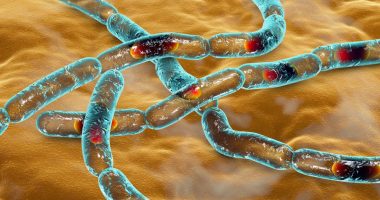Share this @internewscast.com
The new COVID-19 variant that scientists call JN.1 now makes up about 44.1% of COVID-19 cases across the country, the Centers for Disease Control and Prevention estimated Friday, marking another week of the fast-spreading variant’s steep rise in the U.S.
The increase is more than two times larger than the 21.3% that the CDC now estimates the strain made up of infections for the week ending Dec. 9, after Thanksgiving.
Among regions with enough data reported from testing labs to produce these latest projections, the CDC estimates that JN.1’s prevalence is largest in the Northeast region spanning New Jersey and New York, where the strain is 56.9% of cases in those states.
These new estimates come as other countries have also tracked a rapid ascent in JN.1’s prevalence across recent weeks, prompting the World Health Organization to step up the strain’s classification to “variant of interest” on Tuesday – its second highest tier.
Authorities have so far not reported different or more severe symptoms from JN.1 compared to previous strains.
Though officials so far believe the public health risk from JN.1 is no greater than that of other recent strains, its unprecedented accumulation of mutations — most inherited from JN.1’s highly mutated parent BA.2.86, which first raised concern over the summer — has kept health authorities on guard.
For months, BA.2.86 failed to gain much of a foothold around the world, despite being detected infecting people across dozens of countries after its discovery.
JN.1’s additional mutations appear to have changed the trajectory of this strain, prompting concern that the variant may be more transmissible.
The earliest JN.1 cases in the U.S. were reported by labs from samples in September. Since then, JN.1’s share of COVID-19 cases has accelerated to become the fastest-growing to date in the CDC’s every-other-week “Nowcast” estimates.
The CDC’s own variant classifications have not been updated since September, when BA.2.86 was first deemed a “variant being monitored,” the lowest classification for potentially concerning variants. A CDC spokesperson did not immediately respond to a request for comment about whether JN.1 merited a classification.
While the CDC had been releasing weekly updates on its investigations of BA.2.86 earlier this year, the agency has not released an update on JN.1 since a Dec. 8 report on the strain. That report came after the agency first began publishing estimates of the variant ungrouped from its BA.2.86 parent.
Read Related Also: Radio star reveals her one very surprising regret about getting gastric band surgery
Variants grouped under the BA.2.86 umbrella, which include JN.1, have also made up the largest share of variants detected from the CDC’s airport testing program on arriving international travelers in recent weeks.
Effectiveness of COVID vaccines against JN.1
Data from early studies of the strain cited by the WHO in a risk evaluation this week also pointed to research suggesting JN.1 “displays a higher immune evasion” compared to its BA.2.86 parent, though not enough to prevent this season’s COVID-19 vaccines from being effective.
This year’s updated COVID-19 shots were targeted at the XBB.1.5 strains which drove a wave of infections earlier this year. A WHO panel earlier this month declined to call for an update to the vaccine’s recipe, after mulling early data so far measuring the threat posed by JN.1.
In a statement, a Novavax spokesperson said data from studies in mice and nonhuman primates showed its shot “induced cross-neutralization against JN.1” that was “similar” to other XBB strains.
A Pfizer spokesperson said that the company expects to have data in the coming weeks from tests of its vaccine against JN.1. A Moderna spokesperson did not immediately respond to a request for comment.
“Not raising the alarm there, we’re watching it very carefully, but it’s possible we could see a quantum leap as opposed to a gradual erosion of the protection of the vaccine. And if that happens, we’re going to have to move pretty quickly” Dr. Jeanne Marrazzo, head of the National Institute of Allergy and Infectious Diseases, said in an interview published Thursday by the New England Journal of Medicine.
Marrazzo said health authorities were closely watching “end points like hospitalizations and deaths,” as they ramped up scrutiny of the new strain.
The WHO said early data from Belgium and Singapore suggest JN.1 might lead to similar or reduced hospitalization risk compared to other strains.
A WHO spokesperson declined to share additional details about those preliminary findings with CBS News, saying the information was shared with the U.N. agency’s experts ahead of them being published in a journal.
So far, the CDC’s data has tracked rising COVID-19 emergency department visits and hospitalizations not outside of what has been seen during previous winter waves.
For now, those trends remain a fraction of the steep record surge recorded over the winter of 2021-2022, which strained hospitals after the original Omicron variants swept the U.S. over that year’s Christmas and New Year’s holidays.














